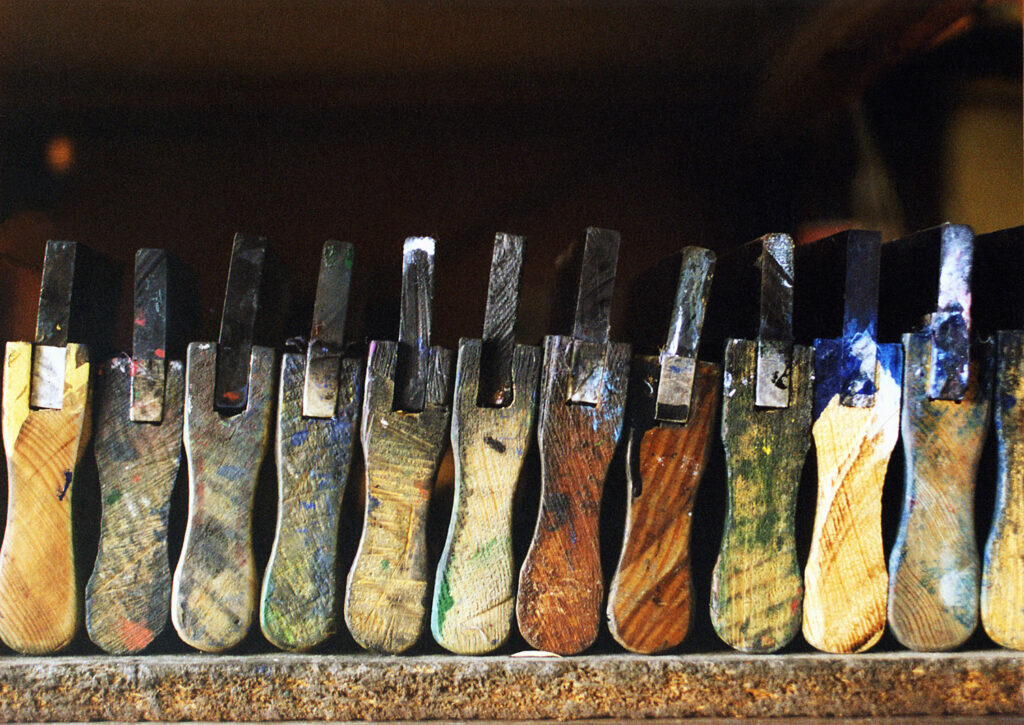Back in 2018, a market research report published by Credence Research Inc. projected that the custom t-shirt industry could balloon above the $10 billion threshold by 2025 . That is no insignificant number.
Everyone from DIY artists to established shops have benefited from new technological advancements that have made custom screen printing profitable again.
Despite this, neophytes may still encounter more obstacles to their screen printing side gig than they are expecting. Between establishing a proper pricing model to acquiring leads for the business, screen printers need the right tools and knowledge in place to succeed.
Fortunately, shopVOX provides both. With our print shop software solutions and helpful tutorials, we can help you establish a screen-printing business and learn how to make it more profitable.
In this guide, we provide some cursory knowledge about the most essential aspects of starting and running a screen-printing business.
History of Screen Printing
Many people are actually surprised to learn that screen printing has a long and rich history. Originating around 960 AD in China, screen printing was first introduced by the Song Dynasty to create printed money.
The tradition carried on in much of the Eastern world for many centuries and became popular in Western countries at the turn of the century. Most notably, screen printing was used to create fliers, t-shirts, and print advertising for the film The Wizard of Oz upon its release in 1939. The following year, a group of artists in New York began using screen printing and paper to create a new form of art called serigraphy.
Screen printing would later become canonized in the art world by Andy Warhol, who began the use of an industrial-sized printing machine to create his signature art pieces.
Screen Printing Equipment
Nowadays, machines can do the work that stiff brushes used to do to transfer ink onto fabric. For novice screen printers, the required materials to get started include:
For industrial and established shop owners, larger screen printing presses and automated order takers may be required to keep up with the sheer volume and customization of orders. Fortunately, ShopVOX’s business printing software can help to organize every aspect of your screen printing business.
How Much Does It Cost?
Determining the prices of custom embroidery or screen printing products will depend on number of factors, not limited to:
Determining prices for custom and off-the-shelf products can help you keep track of costs, chart revenue, and ultimately determine your profitability and long-term outlook. For this reason, printing in bulk will usually yield a higher profit, even if offered at lower prices.
Some shops will also charge screen fees on top of the act of printing. Determining your pricing model ultimately depends on the size of your shop and how much volume you handle.
Working with Multiple Inks and Colors
Screen printers would be wise to invest in their own PMS Color Matching system to identify different inks and make it easier for customers to create their own custom designs.
Now, when working with multiple inks, it’s smart to burn separate screens for each colored ink. The cost of this will increase with each order, so it’s good to establish the cost of different inks and shades in your pricing system. Again, investing in a software program to help you keep track of this data is ideal.
Preparing Artwork Files
With every process, there are bound to be bottlenecks when multiple employees and departments are involved. Streamlining the hand-off between your graphic designer and screen printers will help significantly speed up the efficiency of your operation.
Mostly, your artwork files will need to conform to a certain file size above 300 dpi and meet the requirements of your customers. Working with customers on designs and getting approval beforehand will ensure that you are always offering your best product and on the same page as your customers.
What Is Spoilage?
Finally, you’re bound to run into some missing or damaged products due to the process of screen printing itself. To prevent this and successfully meet each order, it’s recommended to print extras, even if it does slightly inflate your cost. The last thing your business needs is poor reviews in a field that has grown extremely competitive.
Expand Your Business with Printing Press Management Software
With this in mind, you should note that DIY and custom screen printing is a burgeoning industry. Getting your products featured on your own website, Etsy, and Redbubble are key, but they are only a start. Implementing lead-generation strategies and ultimately delivering a good customer experience is the best way to separate your brand from the competition.
ShopVOX can help you to do that. Our software is made to assist companies like yours with their printing press management so everything can be organized and kept in one place for you to examine. From orders to invoices to inventory, our software does a lot of the hard work for you, so all you have to do is open the program and start looking at your records.
Get in touch with us to learn more. We think you’ll be intrigued by everything our software has to offer for screen printing companies!
